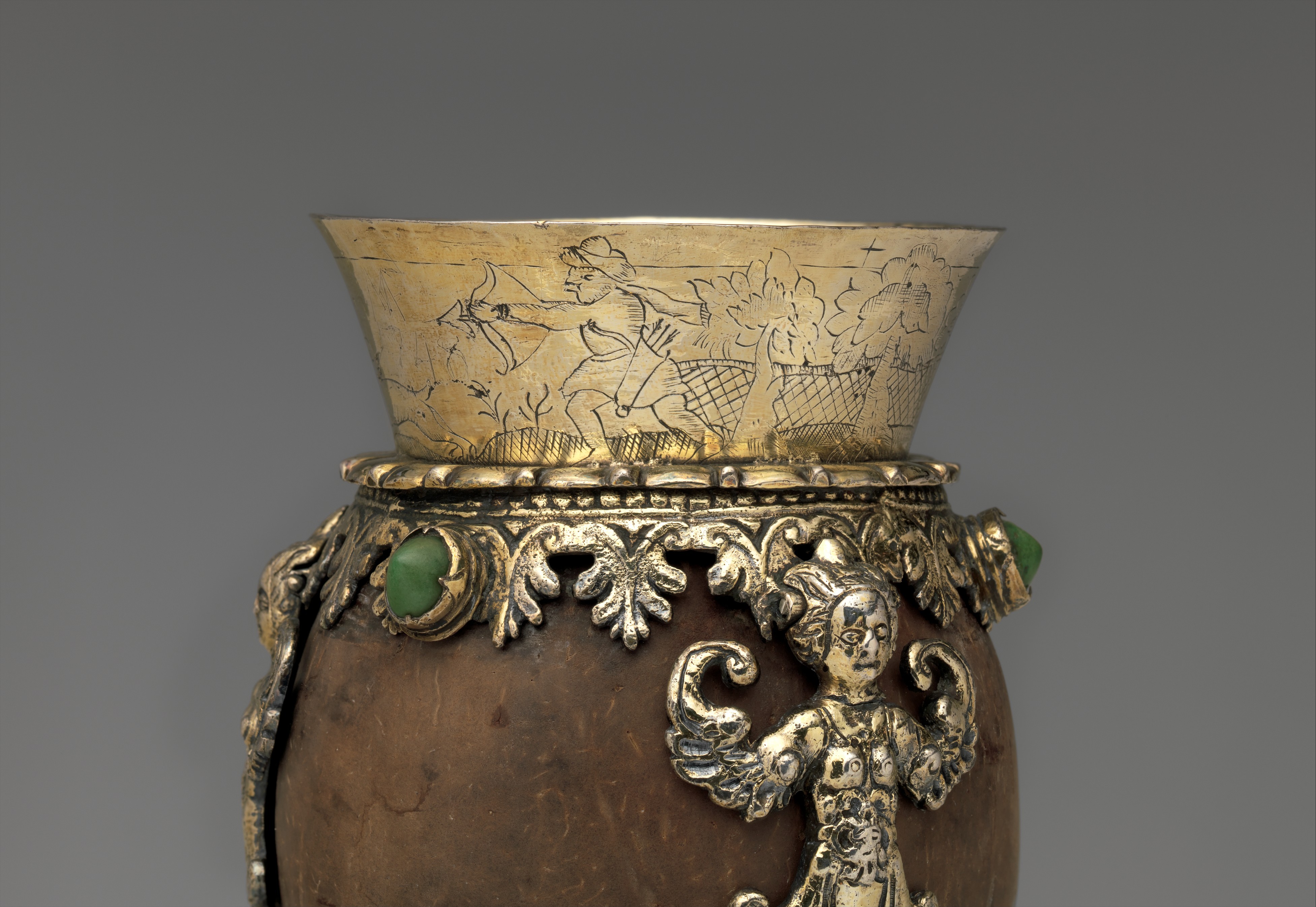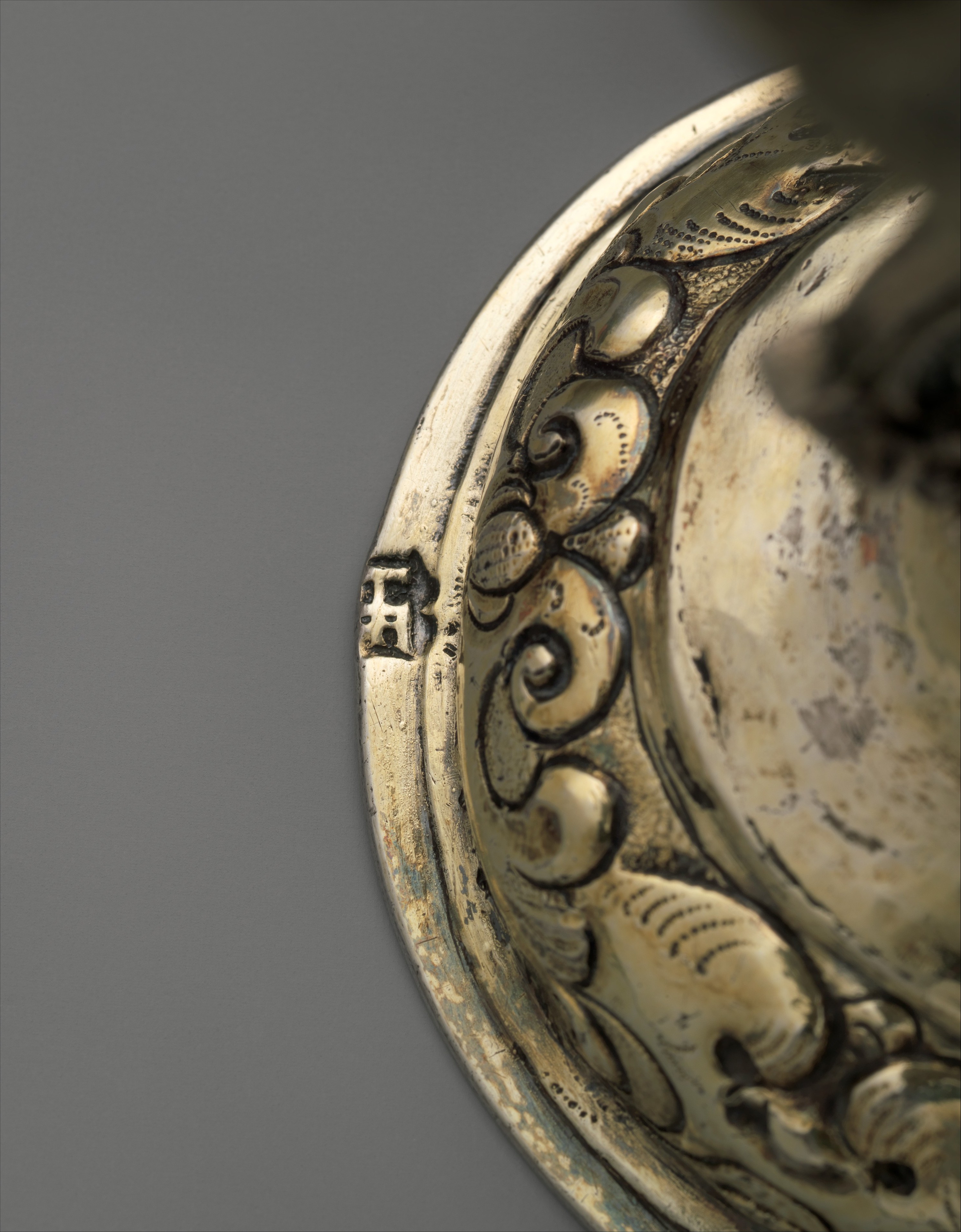Coconut cup
Not on view
The hunting scene engraved on the lip may to refer to the cup’s use after hunting trips when a welcome drink was offered to the most prestigious guests. The decoration is inspired by Virgil Solis’s prints, which were available to craftsmen in pattern books. By adding the turquoises, the goldsmith catered to the local taste for the Ottoman. Marked coconut cups from the Hungarian/Transylvanian region are extremely rare. Of the twenty cups preserved at the Hungarian National Museum in Budapest only one is marked.
Literature
Judit H. Kolba. Hungarian Silver: The Nicolas M. Salgo Collection. London, 1996, p. 60, no. 38.
References
Elemér Kőszeghy. Magyarországi ötvösjegyek a középkortól 1867-ig / Merkzeichen der Goldschmiede Ungarns vom Mittelalter bis 1867. Budapest, 1936, no. 1397 [maker’s mark].
For a coconut cup formerly belonging to a Hungarian aristocratic family, see Judit H. Kolba and Annamária T. Németh. Schätze des Ungarischen Barock. Exh. cat. Deutsches Goldschmiedehaus Hanau. Hanau, 1991, no. 18, pp. 73–4.
[Wolfram Koeppe 2015]
Due to rights restrictions, this image cannot be enlarged, viewed at full screen, or downloaded.
This artwork is meant to be viewed from right to left. Scroll left to view more.




